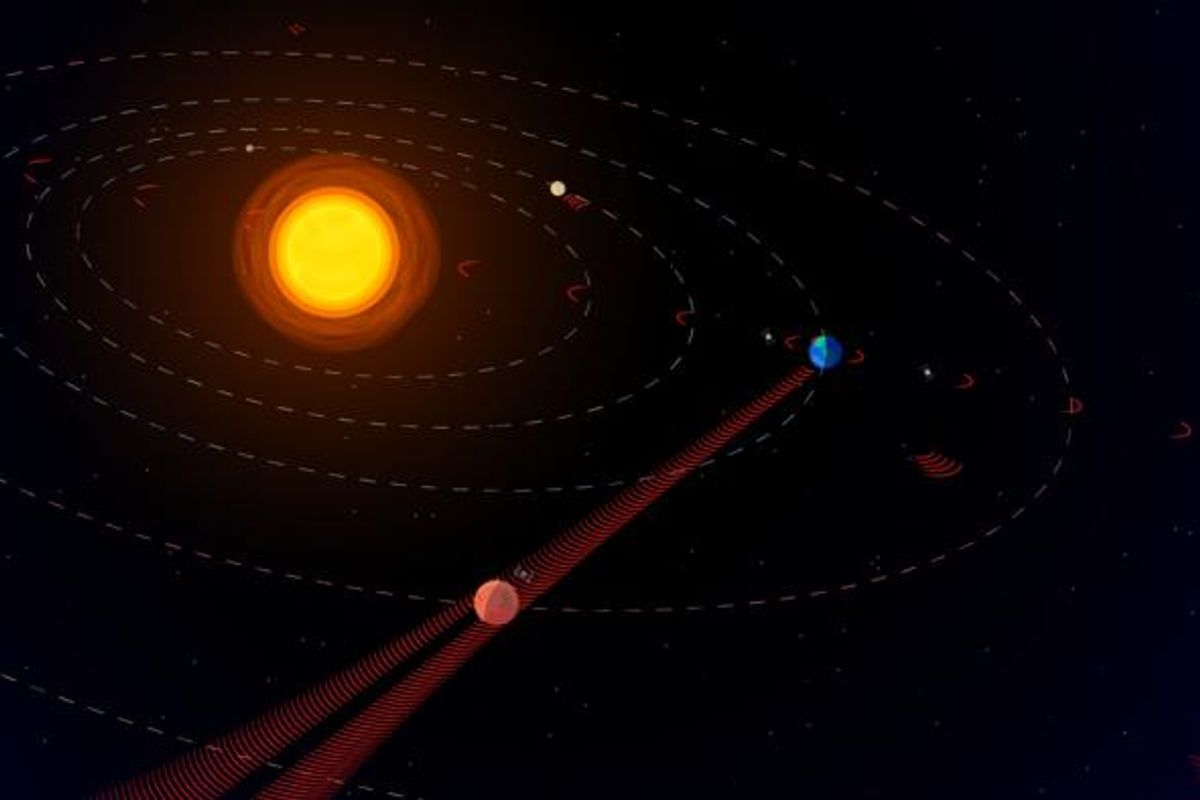As the research team from Penn State and NASA’s Jet Propulsion Laboratory analyzed decades of deep-space communication logs, they found patterns in how we have beamed signals into the cosmos.
Their insights, published in Astrophysical Journal Letters, could help us both detect alien “techno signatures,” a signal trace left by advanced technology, and make our own presence more noticeable.
“Using our own deep space communications as a baseline, we quantified how future searchers for extraterrestrial intelligence could be improved by focusing on systems with particular orientations and planet alignments,” said Jason Wright, co-author of the study and professor of astronomy and astrophysics at Penn State, in a press release.
Sending Signals Into Deep Space
Most strong signals Earth beams into space aren’t intentional greetings. They’re routine communications with spacecraft, like probes around Mars, the James Webb Space Telescope, or New Horizons, now beyond the Solar System.
“Humans are predominantly communicating with the spacecraft and probes we have sent to study other planets like Mars,” said study lead author Pinchen Fan, graduate student in astronomy and astrophysics at Penn State, in the release. “But a planet like Mars does not block the entire transmission, so a distant spacecraft or planet positioned along the path of these interplanetary communications could potentially detect the spillover.”
That “spillover” effect is strongest when Earth and another planet align from an outsider’s view. Such alignments act like cosmic spotlights, briefly making our signals easier to overhear.
Joseph Lazio, project scientist at NASA’s Jet Propulsion Laboratory, noted: “NASA’s Deep Space Network provides the crucial link between Earth and its interplanetary missions. It sends some of humanity’s strongest and most persistent radio signals into space, and the public logs of its transmissions allowed our team to establish the patterns of those transmissions for the past 20 years.”
Read More: How the James Webb Space Telescope Will Search for Extraterrestrial Life
Can Aliens Hear Us?
By comparing transmission logs with spacecraft locations, the researchers calculated the odds of alien interception.
“If an extraterrestrial intelligence were in a location that could observe the alignment of Earth and Mars, there’s a 77% chance they would be in the path of one of our transmissions,” said Fan in the release.
Alignments with other planets bring lower but still meaningful odds, around 12 percent. At other times, the chances are tiny.
In short, if aliens sit in the right spot, they might already have heard us.
Detecting Extraterrestrial Signals
The same principle could sharpen our own search for signals. Instead of scanning the sky at random, scientists suggest focusing on exoplanet systems, planets beyond our solar system, that line up with Earth or their stars.
“With the upcoming launch of NASA’s Nancy Grace Roman Space Telescope, we expect to detect a hundred thousand previously undetected exoplanets, so our potential search area should increase greatly,” Fan explained in the release.
The team also estimated that a typical Deep Space Network transmission could be picked up 23 light-years away with telescopes like ours. That makes nearby star systems especially promising for SETI (Search for Extraterrestrial Intelligence) surveys.
Future communication may also use lasers instead of radio, and extraterrestrial civilizations might do the same. Lasers are harder to detect, but researchers say they shouldn’t be ruled out.
“Humans are pretty early in our spacefaring journey, and as we reach further into our solar system, our transmissions to other planets will only increase,” said Wright.
Read More: Could the Multiverse Help us Find Alien Life? Expert Paul Sutter Explains
Article Sources
Our writers at Discovermagazine.com use peer-reviewed studies and high-quality sources for our articles, and our editors review for scientific accuracy and editorial standards. Review the sources used below for this article:
